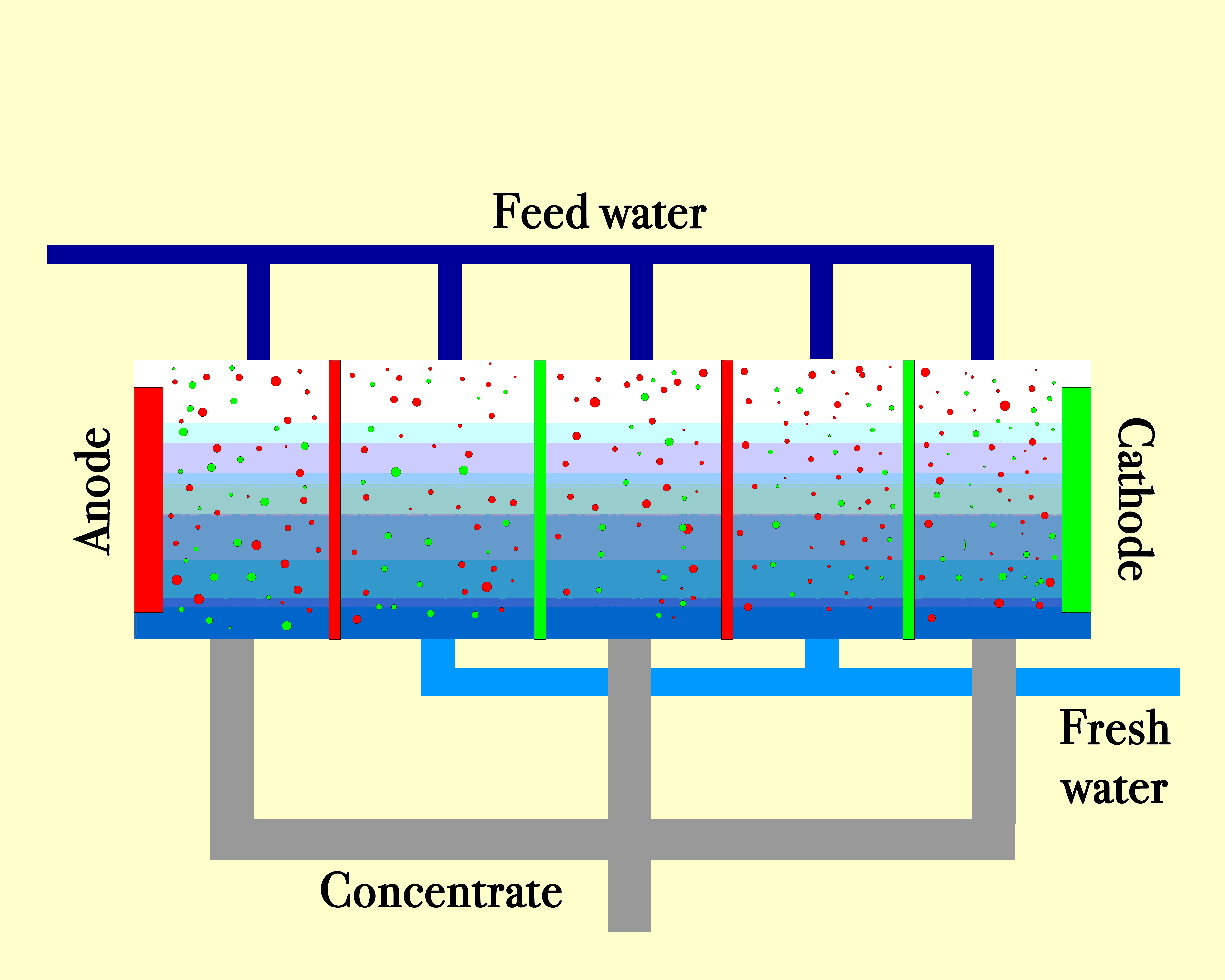The operating principle of electrodialysis reversal treatment is based on the principle that opposites attract. Inside the EDR module there are two electrodes which, depending on the current emitted, will attract the ions to them. The anode, which generates a positive current, attracts the anions since their electrostatic charge is negative. The cathode, on the other hand, emits a negative current and attracts cations because they are positively charged. Between the two electrodes are a series of ion exchange membranes. These membranes allow the passage of certain ions and capture others. Influenced by the direction of the electric current in the water, the ions travel to their respective electrodes and are captured by the ion exchange membranes.
The capture of ions by the electrodes and membranes allows the electrodialysis reversal modules to remove between 40 and 50% of the total dissolved solids in the water. The term "inversion" in the name of this technology comes from the fact that the polarity of the electrodes is reversed 3 to 4 times per hour in order to dislodge the clusters accumulating on the membrane walls.
The adjustment of the current between the electrodes of the electrodialysis module will have an impact on the efficiency of the treatment. Indeed, increasing the intensity of the emitted current will allow the extraction of a greater quantity of dissolved matter. This has a particular advantage since by changing the current, it is easy to control the concentration of dissolved matter in the water.
Below is an animation demonstrating how ions travel in an EDR module. In the green category are the cations, the cathode and the cationic membranes. In the red category, we find the anions, the anode and the anionic membranes.
